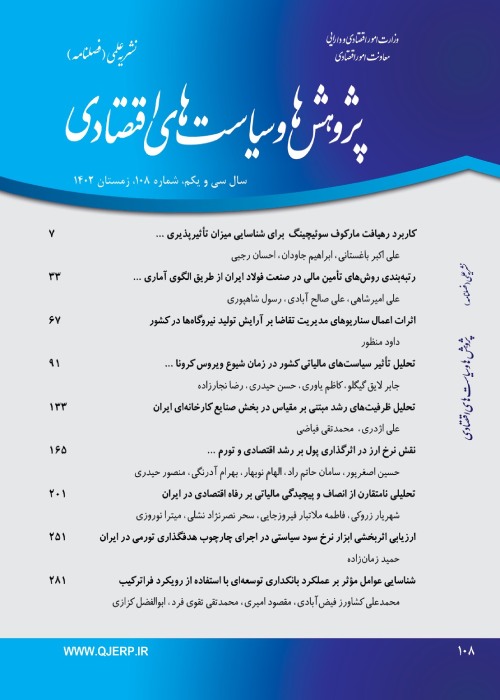Pro-Poor Growth In Selected Iranian Provinces
Author(s):
Article Type:
Research/Original Article (دارای رتبه معتبر)
Abstract:
Poverty is one of the major problems of human society and efforts to reduce it has been always the most important objectives of government policy. In order to achieve this goal, inclusive growth has a critical role. However, income inequality also affects the pace which economic growth is translated into poverty reduction. The most important challenge for policymakers in creating pro-poor policies is linking micro and macroeconomic field. Lack of coordination between these both can prevent the impact of the pro-poor policies In this study, it has been tried by using information household budget to create coordination and Cointegration between macro analyses of economic growth, and the microanalyses of economic actor's behavior. So how economic growth reduces poverty is a key question that discussed in this study. In addition, the impact of changes in average income and income distribution on poverty is studied. To determine which economic sector has been had pro-poor growth, pro-poor growth indexes are calculated for the services, industry and agriculture sectors in urban and rural areas of Azerbaijan Gharbi, Isfahan, Tehran, Khorasan Razavi, Khuzestan, Sistan & Baluchestan, Fars, Kermanshah, Mazandaran and Markazi provinces during the period 2005-2014. Furthermore, using the results, Gini's coefficient has been investigated as an index of inequality. The research results indicate that economic growth is negative in the majority of cases that has increase poverty through income effect. But income distribution has improved and has led to poverty reduction. According to the balance of these two effects on poverty except for Sistan & Baluchistan where poverty has increased in all sectors, Urban service's sector in Tehran, the urban agricultural sector in Isfahan and rural service's sector in other provinces have had best situation in pro-poor. Compare Gini's coefficient with model results indicates that the Gini coefficient did not report inequality correctly.
Keywords:
Pro , Poor Growth , Gini Coefficient , Poor , Poverty Line , Lorenz Curve , Iran
Language:
Persian
Published:
Journal of Economic Research and Policies, Volume:26 Issue: 85, 2018
Pages:
83 to 107
magiran.com/p1826165
دانلود و مطالعه متن این مقاله با یکی از روشهای زیر امکان پذیر است:
اشتراک شخصی
با عضویت و پرداخت آنلاین حق اشتراک یکساله به مبلغ 1,390,000ريال میتوانید 70 عنوان مطلب دانلود کنید!
اشتراک سازمانی
به کتابخانه دانشگاه یا محل کار خود پیشنهاد کنید تا اشتراک سازمانی این پایگاه را برای دسترسی نامحدود همه کاربران به متن مطالب تهیه نمایند!
توجه!
- حق عضویت دریافتی صرف حمایت از نشریات عضو و نگهداری، تکمیل و توسعه مگیران میشود.
- پرداخت حق اشتراک و دانلود مقالات اجازه بازنشر آن در سایر رسانههای چاپی و دیجیتال را به کاربر نمیدهد.
In order to view content subscription is required
Personal subscription
Subscribe magiran.com for 70 € euros via PayPal and download 70 articles during a year.
Organization subscription
Please contact us to subscribe your university or library for unlimited access!



